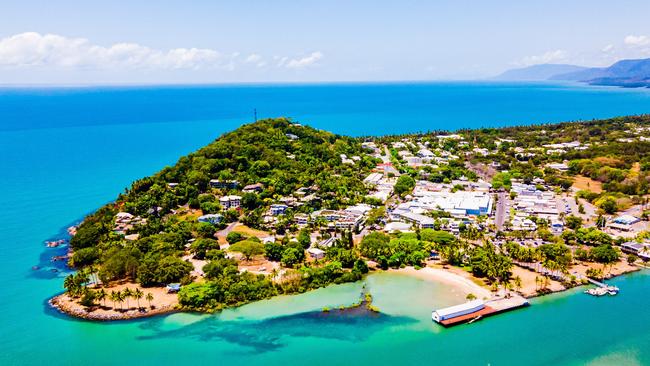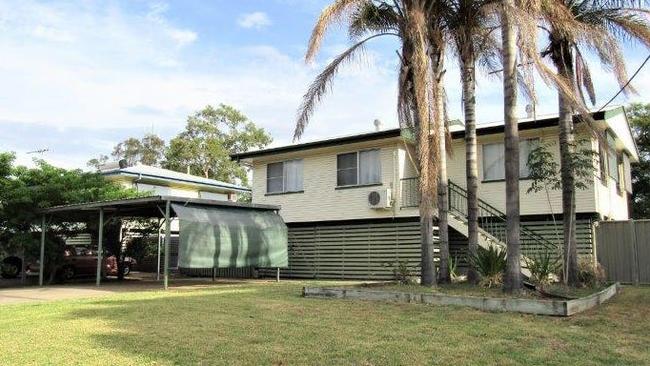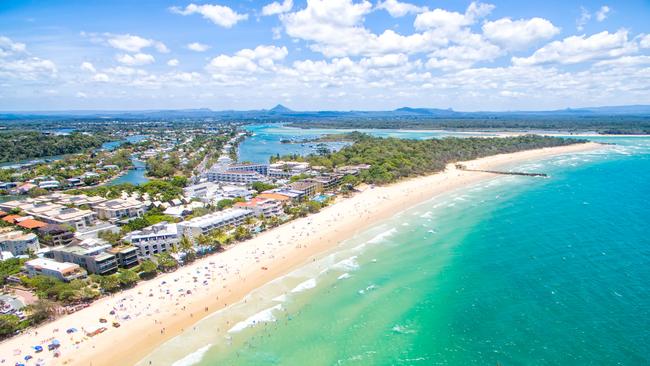Qld suburbs named in top 30 national ‘no go zones’ report
A list of no-go zones for property investors in Queensland have been identified in a new report, including mining towns and surprise beach suburbs. See the top 30 list of where not to buy!

Property
Don't miss out on the headlines from Property. Followed categories will be added to My News.
SIX Queensland towns have been deemed ‘no-go zones’ for property investors, and they range from predictable mining towns to some of the state’s hottest locations during the pandemic property boom.
The locations were found to have a high risk of dramatic falls in prices based on analysis by research group DSR Data, which reviewed every suburb in Australia on 17 different measures of supply and demand.
The locations were then scored out of 100, with anything below 30 considered a no-go zone.
Blackwater (3) and Moranbah (14) made the national top 30 list, as did the sought-after beach locales of Noosa Heads (22) and Burleigh Heads (25).
MORE NEWS: Unique Far North Qld home takes ‘treehouse’ to the next level
Corey and Margaux Parker sell Qld home for nearly $3m
Dogs, cats, get almost $600,000 windfall off Qlder’s dying wish

Banksia Beach on Bribie Island (16) and Port Douglas (20) were also deemed to be among the worst places to buy property, with a higher possibility of losing money if forced to sell.
But compared to Victoria and New South Wales, which had eight and 15 suburbs on the list respectively, Queensland had relatively few ‘no-go’ zones.
South Australia also had just one listing.
DSR Data analyst Jeremy Sheppard said there was no “diplomatic term” to describe market conditions in many of the top 30 worst areas.
“They’re no go zones,” he said. “If I was an investor in these markets I would have sleepless nights wondering what’s going to happen.”

Mr Sheppard said the very worst suburbs – Daylesford and Wonthaggi in Victoria and Queensland coal mining town Blackwater – were outright “disaster areas” for property investors.
“Where we’ve seen (demand to supply) scores like this in the past have been in one industry towns where that industry went belly up and the only reason for many to live there disappeared,” he said.

Markets were considered risky for new buyers if there was a sharp reduction in buyer demand coupled with an extreme rise in property listings, with the supply and demand imbalance expected to put downward pressure on prices.
The resulting danger for new buyers was having to cop a loss on the sale of their property if they were forced to sell soon after the purchase.
Another risk was being in “negative equity” where the value of a new owner’s loan was higher than the value of the property.
And property records show just how much of a hit some buyers have taken in Queensland’s no-go zones.
A house in Blackwater sold for $200,000 in December – $135,000 less than the seller bought it for in 2011.
In Moranbah, a three-bedroom house recently changed hands for $233,000 – a whopping $277,500 less than it was bought for in 2011.

But the latest REA Market Trends report shows that prices are rising, albeit they are far off what they were a decade ago.
Ten years ago, the median house price in Blackwater was $463,000 but it is now $174,000, and that’s after a 12.3 per cent increase in 12 months.
It is a similar story in Moranbah where house values have increased 8.2 per cent to $330,000, which is down from $688,5000 a decade ago.
Investment advisor Scott Levoune of Wealth Through Property said mining town investments were a particularly risky “trap” as they often had high rental returns — an attractive feature in a climate of rising interest rates.
“People see the rents are quite high, but where the risk comes in is that people who live there are only there for work,” he said.
“They don’t want to buy there. What happens if the mine closes?”
Blackwater real estate principal Joy Fernie said the local market was cyclical.
“I have seen Blackwater at its best and at its worst, and right now we are still coming out from the downturn,” she said.
“I am mostly selling to locals and people who are sick of camp life, but there is some investor interest again, especially from interstate.
“Properties are still cheap but rents are rising. It is a buyers market.”

Sam Powell, head of analysis at property advisory group Hello Haus, said remote outer suburbs in most cities were also risky to buy into because more of the residents were first-time buyers who stretched themselves to get a home.
This put them more at risk of selling for a lower price if they could no longer afford their loan or if rates rose further.
This effect, compounded over numerous sales, could drag down prices across a suburb as a whole, Mr Powell said.
He also cautioned investors to be wary of suburbs dominated by landlords and holiday homeowners, as they were more likely to sell in times of hardship.
“It’s not the roof over their heads … If the cost of holding their investment is too much of a drain on their finances they sell and you could get a lot selling at the same time,” Mr Powell said.
“It all comes back to supply and demand. If there is too much supply and not enough demand, prices go down.”


